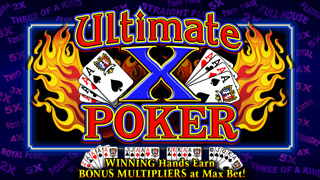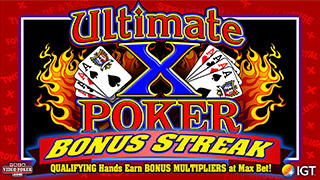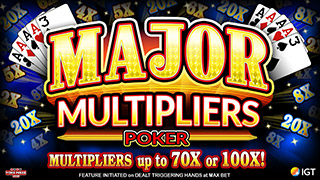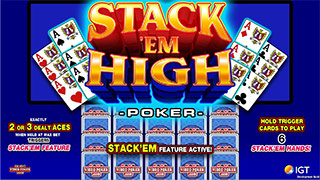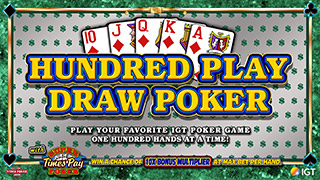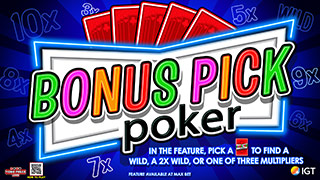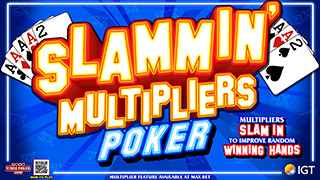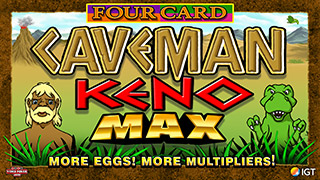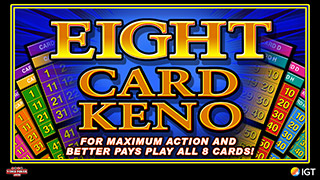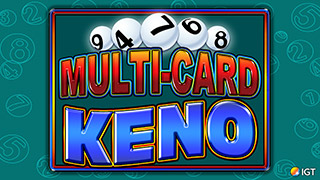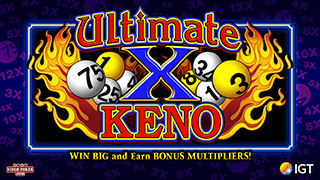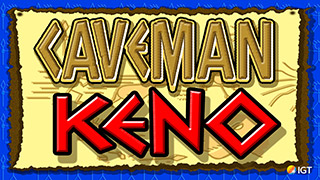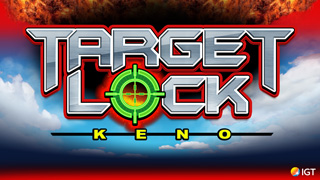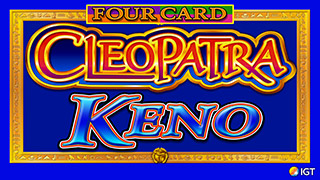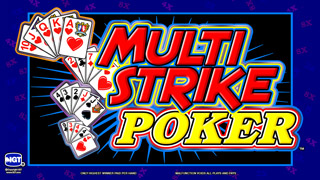My History in Video Poker
-
EDC1977
- Video Poker Master
- Posts: 2001
- Joined: Wed Aug 15, 2007 3:12 pm
Re: My History in Video Poker
I always read/ believe/ but not always understand what you write. Is that Mickey Crimm or Marie? Both can be somewhat difficult to decipher if you're just waking up or trying to get in those last few hands before calling it a day.
-
oej719
- Video Poker Master
- Posts: 1777
- Joined: Wed Sep 06, 2006 5:46 pm
It was to ms. marie.
-
EDC1977
- Video Poker Master
- Posts: 2001
- Joined: Wed Aug 15, 2007 3:12 pm
Thanks buddy. I kinda figured as much since she has a tendency to stray in the opposite direction with her posts. She might have posted something about "Lilly of the Nile" to go with it. No packing heat necessary OEJ, this one's on me.
-
marie meijer
- Video Poker Master
- Posts: 1598
- Joined: Sun Apr 22, 2007 12:45 pm
I always read/ believe/ but not always understand what you write.That makes two of us!
-
mickey crimm
- Senior Member
- Posts: 133
- Joined: Wed Mar 26, 2008 7:16 am
From 1992 until 1996 I mostly drifted around the mountain states playing a poker game called 7-Card Stud Eight-or-Better. The betting was $1 to $5. I started out in Deadwood, South Dakota, then migrated down to Cripple Creek, Colorado, and eventually wound up in Albuquerque. All the while I was hitting libraries in every town I passed through and reading anything and everything gambling. It's been quite awhile since I've hit a library, and my memory is fuzzy here, but under the Dewey Decimal system, I believe all the gambling books were found under 95.7, or maybe it was 96.7. So I would just walk into a library and head straight for that number.
I had run across a book in the library in Fort Collins, Colorado written by Andy Nelson on the game of 7-Card Stud Eight-or-Better. It was an outstanding clinic on how to play the game. It was not a very big book and I ran it over to the copying machine and made a copy. It became my bible on how to play the game.
I developed a system of minimal risk. I played only a pair of Aces with a low kicker, three wheel cards, some three card sixes, and some three card sevens. The players in these games were loose passive with no one raising on third street. I got to limp the three card low hands in for a buck to see what I could catch. If I didn't catch another good low card on fourth street I folded if there was any action. My whole plan was to front door the low hand then back door the high hand. It worked like a champ. I made money at the game.
Another thing I was doing at the time was trying to figure out gambling math. It was hard because I didn't understand the code language of math. Then I found a John Scarne book called Scarne's Guide to Modern Poker. Chapter Ten was called "The Mathematics of Poker." He broke down a 52 card deck showing how many 5-card combinations make a royal flush, straight flush, 4-of-a-Kiind, etc. And he wrote the equations out long hand like this: 52 X 51 X 50 X 49 X 48 Divided by 5 X 4 X 3 x 2 X 1. It was a big eye opener for me. Figuring combinations and permutations became easy for me. It worked well for poker but eventually, when I got into video poker, it was a huge help. We didn't have the software back then that is available today and one had to work out the add on for promotions, or figure the odds for making a certain hand themselves.
So while I was drifting from cardroom to cardroom playing poker I also read Cardplayer Magazine every time a new issue came out. It was given away free in the cardrooms. I read every issue from cover to cover. One of the columnists was Lenny Frome, the Godfather of Video Poker. He wrote about a game called Full Pay Deuces Wild. It was Lenny that got me to looking at video poker as a profit center.
I had run across a book in the library in Fort Collins, Colorado written by Andy Nelson on the game of 7-Card Stud Eight-or-Better. It was an outstanding clinic on how to play the game. It was not a very big book and I ran it over to the copying machine and made a copy. It became my bible on how to play the game.
I developed a system of minimal risk. I played only a pair of Aces with a low kicker, three wheel cards, some three card sixes, and some three card sevens. The players in these games were loose passive with no one raising on third street. I got to limp the three card low hands in for a buck to see what I could catch. If I didn't catch another good low card on fourth street I folded if there was any action. My whole plan was to front door the low hand then back door the high hand. It worked like a champ. I made money at the game.
Another thing I was doing at the time was trying to figure out gambling math. It was hard because I didn't understand the code language of math. Then I found a John Scarne book called Scarne's Guide to Modern Poker. Chapter Ten was called "The Mathematics of Poker." He broke down a 52 card deck showing how many 5-card combinations make a royal flush, straight flush, 4-of-a-Kiind, etc. And he wrote the equations out long hand like this: 52 X 51 X 50 X 49 X 48 Divided by 5 X 4 X 3 x 2 X 1. It was a big eye opener for me. Figuring combinations and permutations became easy for me. It worked well for poker but eventually, when I got into video poker, it was a huge help. We didn't have the software back then that is available today and one had to work out the add on for promotions, or figure the odds for making a certain hand themselves.
So while I was drifting from cardroom to cardroom playing poker I also read Cardplayer Magazine every time a new issue came out. It was given away free in the cardrooms. I read every issue from cover to cover. One of the columnists was Lenny Frome, the Godfather of Video Poker. He wrote about a game called Full Pay Deuces Wild. It was Lenny that got me to looking at video poker as a profit center.
-
royal flush
- Video Poker Master
- Posts: 1116
- Joined: Fri Nov 10, 2006 12:50 pm
i like your style i play more live poker 7 stud 8 or better no longer spread in lower limits i liked it too they would raise with split queens thinking it was like regular stud i play omaha 8 or better or no limit against "all nighters" play alot of fpdw or look for promotions like double royals which make games 102% or double 4 of a kinds on dollar games cant find 114% games which you found. for me i enjoy the game and make a some money no my mainstay
-
mickey crimm
- Senior Member
- Posts: 133
- Joined: Wed Mar 26, 2008 7:16 am
i like your style i play more live poker 7 stud 8 or better no longer spread in lower limits i liked it too they would raise with split queens thinking it was like regular stud i play omaha 8 or better or no limit against "all nighters" play alot of fpdw or look for promotions like double royals which make games 102% or double 4 of a kinds on dollar games cant find 114% games which you found. for me i enjoy the game and make a some money no my mainstay
The Stud Hi-Lo games around the mountains states started drying up in the mid-nineties. The houses didn't like spreading the game, they could make more drop on Texas Holdem. The dealers didn't like dealing the game, they got more tips for Texas Holdem.
And there is another thing about the game. When the players are loose passive and 5 or six players are entering the pot on third street this game is heaven to play. In Deadwood and Cripple Creek the dealers cranked out about 30 hands per hour. At the Phoenix House in Cripple Creek they would not employ a dealer who couldn't do at least 28 hands per hour.
The betting was $1 to $5 and there was a $1 forced opener for whoever caught the low card. It was an eight-handed game so it only cost me about $4 an hour to set there and look at cards. With my 3-card lows I would just chip in and see if I could catch another good low card. And I monitored the other low draws to insure I was winning the race for low. When you catch a fourth good low card on fourth street you are in the catbirds seat. With three cards to come you are a heavy favorite to make the low. But the greatest thing about it is you have the opportunity to make the low on fifth street and start pounding the pot.
And the pair and two -pair players never threw their hands away. They always called me down. I couldn't tell you how many times I made the low on fifth street, started poiunding the pot, then backed into the high hand by making Aces Up, or a low straight, or a flush and scooped a hundred or hundred-fifty dollar pot.
With a Pair of Aces and a low kicker on third street I made it $6 to go and the only hand that would call me was always a good 3-card low. It was an easy read. If someone came in with the 4 of Diamonds doorcard and caught an offsuit high-card on fourth street I pounded the pot. The reason is the offsuit high-card turns all their draws into longshots with only three cards to come. If they had something like 3-4-5 and caught an offsuit ten now all their draws are longshots to come in. But if they came in with that 4 of Diamonds and caught the 3 of Diamonds I could slow down. Like I said it was an easy read.
This is my most memorable hand. It happened at Soaring Eagle Casino in Mount Pleasant, Michigan (I played mostly in the mountain states but did make a trip back to Tama, Iowa and Mount Pleasant to play stud-hi-lo.)
It was September, 1994, I believe. It was a 3-6 game. $1 forced opener and a bet and three raises:
I looked down at 3-4-5 with two spades. The one seat opened; the two seat, with an 8 up completed it to $3, the 3, 4, and 5 seats all had an Ace doorcard. All three called the $3. I was in the 6 seat. My wheel draw was dead but the 2's and 6's were live; I called. The guy in the 7 seat behind me, with a King up made it $6 to go. The 8 seat called as did the 1 seat.
IT WAS A FAMILY POT!!! But guess what happened. The 2 seat made it $9 to go. Wow!! I thought. I managed to get myself trapped in a rasing war on third street with the Aces dead for my draw and no doubt one or more of those three players with the Aces doorcards got a better low draw than me. Nice going, Mickey!!! There was no doubt in my mind that the two seat had rolled up eights. I was getting the right price so I was at least gonna see fourth street. I called.
But then guess what happened. The guy behind me with the King up capped it at $12. I was a dead duck but pot committed to see fourth street. Now I was sure he had rolled up Kings. The pot was $96 minus the $3 rake or $93.
The dealer burned and turned. The three players in front of me all caught: wheel card, wheel card, wheel card!!! Damn, I thought as I caught the 2 of spades giving me a 5-4-3-2 with three spades. I didn't like my spot. The Aces were dead. I didn't see any 6's anywhere but there was bound to be a 6 or two in the hole cards of the other three low draws. The flush was a longshot.
1 seat checked, 2 seat bet $3. The three low draws in front of me called. I called. The 7 seat made it $6. Damn!! Damn!! Damn!! I'm caught in a rasing war on fourth street with a dead draw. Damn!! Damn!! Damn!! The pot got capped again!! Pot size now $189.
The dealer burned and turned the fifth street card. The betting went to $6. All three of the Ace-wheel Card draws caught: brick, brick, brick (a Brick is a high card that does not help a low draw). I caught an offsuit 7!!!. I was the first one to the low!!!
The 2 seat and 7 seat were still capping but I joined in the raising war to try and get the other low draws out. I didn't have to worry about the 1 seat, 2 seat, 7 seat or 8 seat being on low draws. They were all on high hands. It was those Ace-Wheel Card low draws that were scaring me. One or two of them were bound to be drawing to a 6 or a 5 high. And the two players that were rolled up could fill up and I would be in a major trap. The pot was capped again. IT WAS STILL A FAMILY POT!!! The pot was now $381.
The dealer burned and turned the sixth street card. Again the three low draws caught: brick, brick, brick!!! I caught the 9 of spades giving me a four-flush with my 7-5-4-3-2 low. I was still the only made low hand. The 6's were live. There were only a few spades laying around the deck. And, of course, the pot got capped again!!! AND IT WAS STILL A FAMILY POT!!! The pot size was now $573.
"With only one card to go maybe I'll get out of this trap for half the pot " I thought. But then the dealer said "Sorry, Community Card!!"
Oh, NO! NO! NO! Damn! Damn! Damn! In a family pot there are not enough cards in the deck to deal 7 cards to all eight players. So the last card is a community card which belongs to all eight players. I was having a hemorrage because I knew that any card 7 or lower was bound to make
one of the other low draws a better low than me. Even if a 6 came off I could get middled by a 6-4-3-2-1 and anyone having a higher straight than me, or a flush or full house.
The dealer took the card in his hand and the three burn cards and shuffled them up. He cut them and turned over.....................THE ACE OF SPADES!!!!! That card counterfeited the other low draws. It made me a wheel with the flush. I scanned the table quickly to see if anyone else had enough spades to make a flush. Mine was only 9-high. NO ONE DID!!!
It was checked around to me. I bet and got called in 4 spots. The pot was now $603. You should have seen the dejected looks on my opponents faces when I rolled my hand over. And sure enough the 2 seat and 7 seat were both rolled up with trips on third street. But they had no board pair and the Ace of Spades was a dead card for them.
The Stud Hi-Lo games around the mountains states started drying up in the mid-nineties. The houses didn't like spreading the game, they could make more drop on Texas Holdem. The dealers didn't like dealing the game, they got more tips for Texas Holdem.
And there is another thing about the game. When the players are loose passive and 5 or six players are entering the pot on third street this game is heaven to play. In Deadwood and Cripple Creek the dealers cranked out about 30 hands per hour. At the Phoenix House in Cripple Creek they would not employ a dealer who couldn't do at least 28 hands per hour.
The betting was $1 to $5 and there was a $1 forced opener for whoever caught the low card. It was an eight-handed game so it only cost me about $4 an hour to set there and look at cards. With my 3-card lows I would just chip in and see if I could catch another good low card. And I monitored the other low draws to insure I was winning the race for low. When you catch a fourth good low card on fourth street you are in the catbirds seat. With three cards to come you are a heavy favorite to make the low. But the greatest thing about it is you have the opportunity to make the low on fifth street and start pounding the pot.
And the pair and two -pair players never threw their hands away. They always called me down. I couldn't tell you how many times I made the low on fifth street, started poiunding the pot, then backed into the high hand by making Aces Up, or a low straight, or a flush and scooped a hundred or hundred-fifty dollar pot.
With a Pair of Aces and a low kicker on third street I made it $6 to go and the only hand that would call me was always a good 3-card low. It was an easy read. If someone came in with the 4 of Diamonds doorcard and caught an offsuit high-card on fourth street I pounded the pot. The reason is the offsuit high-card turns all their draws into longshots with only three cards to come. If they had something like 3-4-5 and caught an offsuit ten now all their draws are longshots to come in. But if they came in with that 4 of Diamonds and caught the 3 of Diamonds I could slow down. Like I said it was an easy read.
This is my most memorable hand. It happened at Soaring Eagle Casino in Mount Pleasant, Michigan (I played mostly in the mountain states but did make a trip back to Tama, Iowa and Mount Pleasant to play stud-hi-lo.)
It was September, 1994, I believe. It was a 3-6 game. $1 forced opener and a bet and three raises:
I looked down at 3-4-5 with two spades. The one seat opened; the two seat, with an 8 up completed it to $3, the 3, 4, and 5 seats all had an Ace doorcard. All three called the $3. I was in the 6 seat. My wheel draw was dead but the 2's and 6's were live; I called. The guy in the 7 seat behind me, with a King up made it $6 to go. The 8 seat called as did the 1 seat.
IT WAS A FAMILY POT!!! But guess what happened. The 2 seat made it $9 to go. Wow!! I thought. I managed to get myself trapped in a rasing war on third street with the Aces dead for my draw and no doubt one or more of those three players with the Aces doorcards got a better low draw than me. Nice going, Mickey!!! There was no doubt in my mind that the two seat had rolled up eights. I was getting the right price so I was at least gonna see fourth street. I called.
But then guess what happened. The guy behind me with the King up capped it at $12. I was a dead duck but pot committed to see fourth street. Now I was sure he had rolled up Kings. The pot was $96 minus the $3 rake or $93.
The dealer burned and turned. The three players in front of me all caught: wheel card, wheel card, wheel card!!! Damn, I thought as I caught the 2 of spades giving me a 5-4-3-2 with three spades. I didn't like my spot. The Aces were dead. I didn't see any 6's anywhere but there was bound to be a 6 or two in the hole cards of the other three low draws. The flush was a longshot.
1 seat checked, 2 seat bet $3. The three low draws in front of me called. I called. The 7 seat made it $6. Damn!! Damn!! Damn!! I'm caught in a rasing war on fourth street with a dead draw. Damn!! Damn!! Damn!! The pot got capped again!! Pot size now $189.
The dealer burned and turned the fifth street card. The betting went to $6. All three of the Ace-wheel Card draws caught: brick, brick, brick (a Brick is a high card that does not help a low draw). I caught an offsuit 7!!!. I was the first one to the low!!!
The 2 seat and 7 seat were still capping but I joined in the raising war to try and get the other low draws out. I didn't have to worry about the 1 seat, 2 seat, 7 seat or 8 seat being on low draws. They were all on high hands. It was those Ace-Wheel Card low draws that were scaring me. One or two of them were bound to be drawing to a 6 or a 5 high. And the two players that were rolled up could fill up and I would be in a major trap. The pot was capped again. IT WAS STILL A FAMILY POT!!! The pot was now $381.
The dealer burned and turned the sixth street card. Again the three low draws caught: brick, brick, brick!!! I caught the 9 of spades giving me a four-flush with my 7-5-4-3-2 low. I was still the only made low hand. The 6's were live. There were only a few spades laying around the deck. And, of course, the pot got capped again!!! AND IT WAS STILL A FAMILY POT!!! The pot size was now $573.
"With only one card to go maybe I'll get out of this trap for half the pot " I thought. But then the dealer said "Sorry, Community Card!!"
Oh, NO! NO! NO! Damn! Damn! Damn! In a family pot there are not enough cards in the deck to deal 7 cards to all eight players. So the last card is a community card which belongs to all eight players. I was having a hemorrage because I knew that any card 7 or lower was bound to make
one of the other low draws a better low than me. Even if a 6 came off I could get middled by a 6-4-3-2-1 and anyone having a higher straight than me, or a flush or full house.
The dealer took the card in his hand and the three burn cards and shuffled them up. He cut them and turned over.....................THE ACE OF SPADES!!!!! That card counterfeited the other low draws. It made me a wheel with the flush. I scanned the table quickly to see if anyone else had enough spades to make a flush. Mine was only 9-high. NO ONE DID!!!
It was checked around to me. I bet and got called in 4 spots. The pot was now $603. You should have seen the dejected looks on my opponents faces when I rolled my hand over. And sure enough the 2 seat and 7 seat were both rolled up with trips on third street. But they had no board pair and the Ace of Spades was a dead card for them.
-
Eduardo
- Video Poker Master
- Posts: 2965
- Joined: Thu Aug 31, 2006 7:19 pm
Nice!
Love the stories, Mickey.
Love the stories, Mickey.
-
mickey crimm
- Senior Member
- Posts: 133
- Joined: Wed Mar 26, 2008 7:16 am
Sometime around December 1996, on one of my trips up to Las Vegas from Laughlin to play the dollar denom Piggy Bankin' machines I stopped into Gamblers General Store looking for Lenny Frome's books on video poker.
But I found something better. I found Dan Paymar's books. The first was called Precision Play, the second was called The Best of Video Poker Times. Paymar had a monthly newletter called Video Poker Times and The Best of Video Poker Times was a collection of his best articles. I bought both and also bought his strategy cards for 9/6 Jacks or Better, Full Pay Deuces Wild, and Flush Attack.
Those books were a real eye opener for me. Dan taught how to get a big edge on some of the games. I called it "making dollar money for playing quarter video poker." What would you rather have a 1% edge at dollar denom or a 4% edge at quarter denom? They both carry the same hourly earn rate but bankroll requirements and money swings are much less at the quarter denom.
Precision Play is no longer in print but Dan came out with a revised and lengthier version of the book called Video Poker Optimum Play. He had later come out with The Best of Video Poker Times 2. Then he combined those two books and came out with All The Best of Video Poker Times. I've long since given these books away. I wish I had them here for reference in writing some of these posts. Video Poker Optimum Play is what I recommend to anyone new getting into video poker. Many of the games are extinct now but the book is still a great primer on video poker.
I wrote about the Jackpot Cards, or Bingo Cards, whichever you prefer, in another thread. So I won't go into detail here. But they were a great example of how we got a big edge, 4%, 5%, 6%. It's a great example of making dollar money at quarter video poker. These machines were in every casino in Laughlin and it was just a matter of walking the casino floors checking the bingo cards for a play.
I also started playing Full Pay Deuces Wild at Gold River (now River Palms) on Thursdays and Fridays. The Gold River slot card was worth .33% and on Thursdays for 24 hours you got 3X points. On Fridays for 24 hours you got 2X points.
This was not exactly dollar money for quarter play but it was still a super strong play. As you know Deuces is a 100.7577% game. But let's break it down a little. If you take a look at game stats on one of the programs you will see that the royal frequency is 45,679 games. So the royal equates to 1.7514% of the payback. Subtracting that off of 100.7577 leaves a payback of 99.0063%. So, essentially, you a running just a 1% deficit between royals. This along with the fact that the next biggest cycle in the game is 4 Deuces at 4,885 games, plus the strategy with only 36 moves makes it easy to master, is what makes Deuces Wild such a strong play. And it's a very pleasurable game to play.
So running a 1% loss rate between royals means the cost of producing a royal is $571. 45,679 X $1.25 = $57, 099. 1% X $57, 099 = $571. I rounded off just a hair. But if you are receiving 1% cashback on Thursdays, like I did, you will run $571 cashback per royal cycle. So in this situation your cost of producing a royal is zero. That's what made the play so strong.
But I found something better. I found Dan Paymar's books. The first was called Precision Play, the second was called The Best of Video Poker Times. Paymar had a monthly newletter called Video Poker Times and The Best of Video Poker Times was a collection of his best articles. I bought both and also bought his strategy cards for 9/6 Jacks or Better, Full Pay Deuces Wild, and Flush Attack.
Those books were a real eye opener for me. Dan taught how to get a big edge on some of the games. I called it "making dollar money for playing quarter video poker." What would you rather have a 1% edge at dollar denom or a 4% edge at quarter denom? They both carry the same hourly earn rate but bankroll requirements and money swings are much less at the quarter denom.
Precision Play is no longer in print but Dan came out with a revised and lengthier version of the book called Video Poker Optimum Play. He had later come out with The Best of Video Poker Times 2. Then he combined those two books and came out with All The Best of Video Poker Times. I've long since given these books away. I wish I had them here for reference in writing some of these posts. Video Poker Optimum Play is what I recommend to anyone new getting into video poker. Many of the games are extinct now but the book is still a great primer on video poker.
I wrote about the Jackpot Cards, or Bingo Cards, whichever you prefer, in another thread. So I won't go into detail here. But they were a great example of how we got a big edge, 4%, 5%, 6%. It's a great example of making dollar money at quarter video poker. These machines were in every casino in Laughlin and it was just a matter of walking the casino floors checking the bingo cards for a play.
I also started playing Full Pay Deuces Wild at Gold River (now River Palms) on Thursdays and Fridays. The Gold River slot card was worth .33% and on Thursdays for 24 hours you got 3X points. On Fridays for 24 hours you got 2X points.
This was not exactly dollar money for quarter play but it was still a super strong play. As you know Deuces is a 100.7577% game. But let's break it down a little. If you take a look at game stats on one of the programs you will see that the royal frequency is 45,679 games. So the royal equates to 1.7514% of the payback. Subtracting that off of 100.7577 leaves a payback of 99.0063%. So, essentially, you a running just a 1% deficit between royals. This along with the fact that the next biggest cycle in the game is 4 Deuces at 4,885 games, plus the strategy with only 36 moves makes it easy to master, is what makes Deuces Wild such a strong play. And it's a very pleasurable game to play.
So running a 1% loss rate between royals means the cost of producing a royal is $571. 45,679 X $1.25 = $57, 099. 1% X $57, 099 = $571. I rounded off just a hair. But if you are receiving 1% cashback on Thursdays, like I did, you will run $571 cashback per royal cycle. So in this situation your cost of producing a royal is zero. That's what made the play so strong.
-
royal flush
- Video Poker Master
- Posts: 1116
- Joined: Fri Nov 10, 2006 12:50 pm
i would rather have the 25c game no w2gs and no handpays no tips also easy game to play correctly on my last trip i saw a tourist playing fpdw hold a single ace and draw 4 hitting the royal. she hit a hand i would not have hit as i would have tossed all 5 cards



